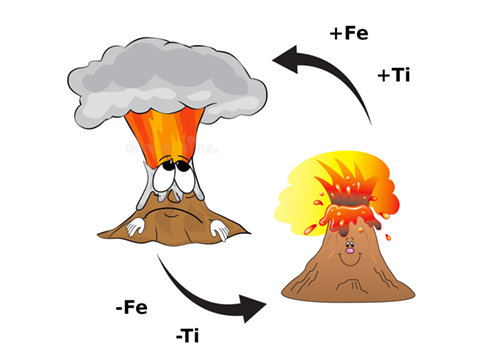
As we become adults we learn that our organism is a complex system that is very sensitive to the concentration of certain "elements". Some of these also have a clear effect on our behavior, and can therefore become, if necessary, very useful "drugs". Volcanoes are also a complex system, and we volcanologists know that their behavior depends greatly on the chemical-physical characteristics of the magma that feeds them. A recent paper, published in Nature Communications Earth & Environment and titled "Magma titanium and iron contents dictate crystallization timescales and rheological behaviour in basaltic volcanic systems," reveals how small variations in the magma chemical composition can significantly influence the eruptive behavior of these volcanoes. The research was conducted by a team of scientists from the National Institute of Geophysics and Volcanology (INGV), the Roma Tre University, and the National Research Council (CNR).
The study highlights how a higher concentration in titanium (Ti) and iron (Fe) in basaltic magmas can promote the formation of different crystalline phases. Specifically, a higher concentration of these metals leads to the crystallization of iron oxides, which play a crucial role in the way volcanic gases leave the magma and in the way the magma moves towards the surface.
These crystals increase the viscosity of the magma and provide ideal surfaces for the nucleation of gas bubbles, thereby influencing the eruptive style of the volcanoes. Understanding these factors is essential for comprehending the mechanisms that determine volcanic eruptions and helps explain the variations in eruptive activity of basaltic volcanoes.
For further details and insights, you can download the article at the following link:

